REVIEW OF 2013 EXHIBITION
"Composure and Complicity in Contained Spaces" by Susan Heywood
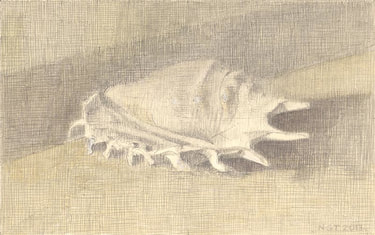
A selection of recent paintings and drawings by Nicolas Granger-Taylor, currently showing at Jonathan Cooper’s Park Walk Gallery in Chelsea, revisits three important genres of traditional art practice: portraiture, the still life and the nude. Modest in scale and presented in formal frames under non-reflective glass, these appealing, intimate works find a sympathetic setting in the small gallery.
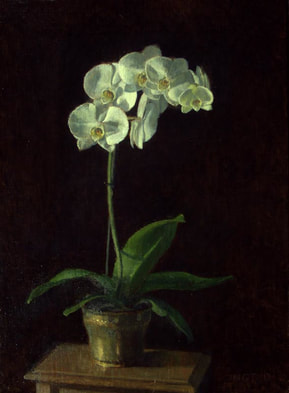
Nicolas Granger-Taylor’s approach is reductive and painterly. He employs oil on panel, canvas and board to produce an even, slightly dry surface finish. The degree of separation afforded by framing and glazing coupled with accessible size (typically 12 x 16 to 20 inches or less) is well-suited to his subject matter. Simplified contextual detail, backgrounds which are often reduced to a wash of ochre tinged colour, and a subtle mastery of light and shadow, anchor the foregrounded subject. So for example, he sets a delicately rendered orchid on a barely glimpsed wooden table top, slightly angling it against the picture plane. This allows him to explore the play of light on different colours and textures: the smooth white petals and glossy green leaves of the plant, the dull glow of the brass pot which contains it and the humble grained wooden surface.
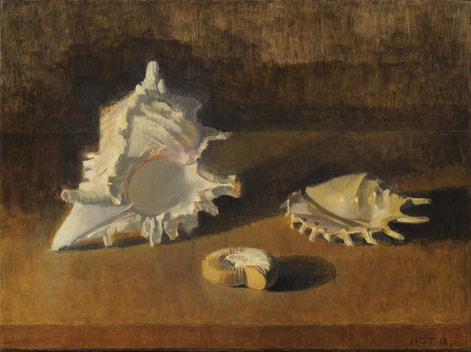
In “Fossil and Shells” three items are displayed as if for a gentlemanly discuss-ion by connoisseurs, the details of their structure carefully delineated and anim-ated by the shadows which they cast. My personal favourite is a sensitive pencil and water colour study of a single shell (see main image above) where the artist uses a monochrome palette to generate a ghostly atmosphere for an object which seems to exist outside finite time and space: it is immutable and eternal.
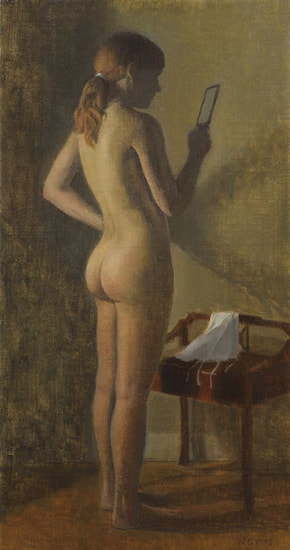
The female nude has been a trope for artists from the earliest classical period. The sculptors of ancient Greece produced such sublime idealisations of the naked female form that their legacy informed the copies made by leading stone carvers in Imperial Rome and became the template for the Italian Renaissance, the neo-classical revival of Enlightenment Europe and the classically inspired artists of the 19thcentury (think Ingres, Leighton and Burne -Jones). Granger-Taylor’s contemporary take on the nude stays faithful to the established idiom of naturalistic images painted with suave, understated refinement. And whilst he gives his female subjects an assertive, equivocal demeanour which is distinctly modern, his style does not rely on sensation or shock treatment for effect, quite the opposite. These quietly confident women exist on their own terms in their own space. Warm flesh tones complement the warm tones of the brown divan and red cushion on which “Reclining Nude” rests her knee as she sprawls with languid grace, challenging the viewer to interrupt her privacy.
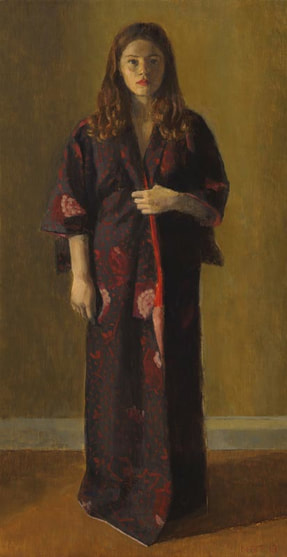
“Nude with Mirror” (see above left) affords a back view of the firmly-modelled standing figure which reminded me of some of Bonnard’s tender studies of his wife in a similar pose. In “Poet” and ”Nina” (see right), the two women are placed facing forward, full on to the viewer, a pose which highlights Granger- Taylor’s characterisation of each model and his treatment of the richly patterned floor-length gown.
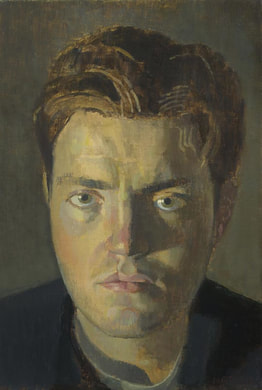
His portrait of “Tom Burke” (left) is intense and expressionist; the head with its steady gaze fills the frame, and the flesh tones are nuanced by the tonal effect of light streaming from the right.
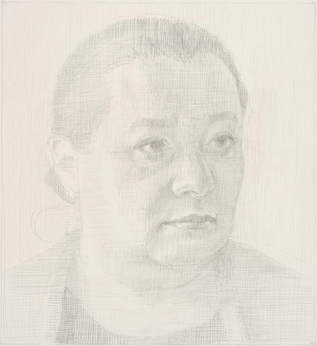
Granger-Taylor’s pencil drawings could well be studies for oil paintings, but they are finished works in their own right. A portrait of “Diana” (right) and two elegant standing nudes are finely cross–hatched with great delicacy and a lightness of touch which deserve the viewer’s close attention. I greatly enjoyed this small but focussed show of an artist who is represented in collections ranging from the Metropolitan Museum in New York to the private collections of Barry Humphries and the Duke of Devonshire.
[This article was first published 31 Oct 2013 on the Platform505 website]
[This article was first published 31 Oct 2013 on the Platform505 website]